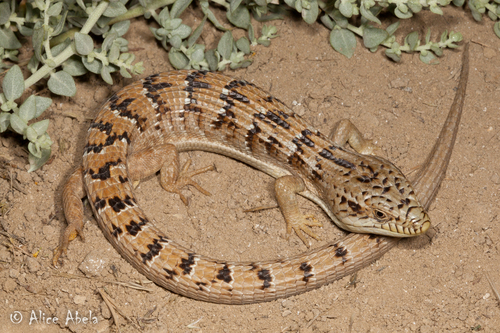
Southern Alligator Lizard
The southern alligator lizard boasts armored scales and a regenerating tail, thriving from coastlines to forests. Its agile movements and distinctive keeled appearance make it a true survivor in the wild, playing a crucial role in controlling insect and small vertebrate populations.
10 years
Lifespan
Least Concern
Conservation Status
Decreasing
Population Trend
Distribution Range of the Southern Alligator Lizard
Elgaria multicarinata, commonly known as the Southern Alligator Lizard, is native to the western coastal region of North America. Its geographical distribution includes the United States and Mexico, specifically found in the states of California, Oregon, Nevada, and Baja California.
Southern Alligator Lizard's Habitat
Environmental Conditions
The Southern Alligator Lizard typically inhabits a variety of environments ranging from coastal habitats to inland areas. Its preferred environmental conditions include coastal scrub, grasslands, oak woodlands, coniferous forests, and chaparral. The climate in these regions is generally Mediterranean, characterized by wet winters and hot, dry summers.
Ecological Niche
Elgaria multicarinata is a terrestrial species that often seeks shelter under rocks, logs, and dense vegetation. It is a generalist predator, primarily feeding on a variety of insects and other small invertebrates, although it may also consume small vertebrates. Its ability to thrive in diverse habitats and its diet flexibility make it an adaptable species within its ecological niche.
Copyright @ Nature Style Limited. All Rights Reserved.
 English
English